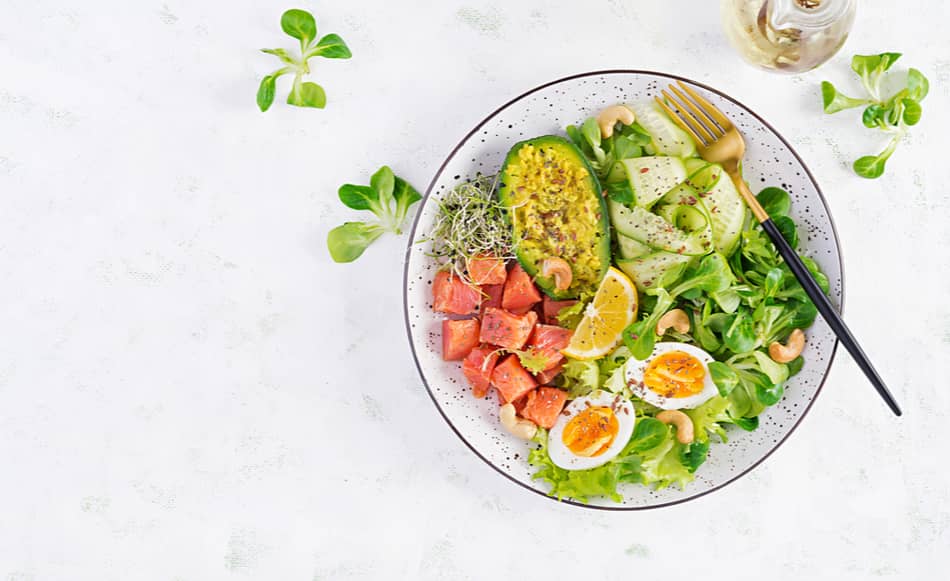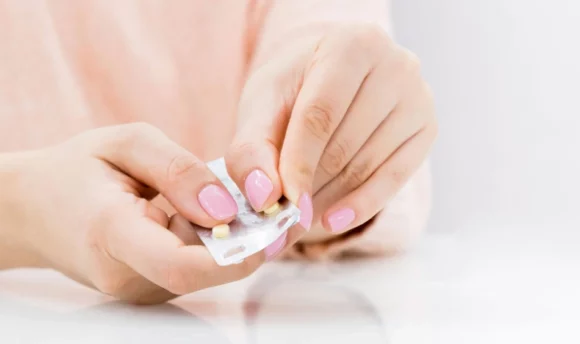1,000 Calorie Diet: Everything to Know
Your questions answered on the calorie-restricted meal plan.

The 1,000 calorie diet plan can be a quick fix option that many people opt for to lose weight fairly quickly.
The trick to weight loss is to consume fewer calories than you burn. It’s known as a calorie deficit, and it encourages the body to break down fat.
With only 1,000 calories, you significantly reduce your calorie intake.
As the calorie count is well below the recommended calorie threshold for adults, it’s essential to use this method mindfully.
Very low-calorie diets come with health risks. They also tend to promote weight loss in the short term and don’t usually result in sustained weight loss.
This article covers everything you need to know about the 1,000 calorie diet, from what it entails, its weight loss effects, and how to keep it up.
1,000 Calorie Diet: Is It Worth Your Attention?
The 1,000 calorie meal plan is a restricted diet that demands a significant drop in daily calorie intake.
The recommended calorie threshold for most adults is 2,500 calories per day for men and 2,000 calories per day for women. So, with the 1,000 calorie diet, you’re consuming only half the calories advised.
Most people who attempt low-calorie diets do so to lose weight as soon as possible.
Rapid weight loss is never advocated by healthcare professionals unless under specific medical circumstances, as losing weight too quickly is dangerous.
Aside from the health concerns, significant weight loss in a short period often results in gaining more weight soon after the diet ends.
Whether you want to lose substantial amounts or just a few pounds, it’s always best to lose weight gradually.
Gradual weight loss allows your body to adjust safely. It also allows you to build healthy habits that are sustainable for life so that you don’t gain weight in the future.
Are 1,000 Calories a Day Healthy?
As the low-calorie diet slashes your recommended daily calories in half, it is not the healthiest way to shed pounds.
As any health expert will tell you, it can lead to rapid weight loss, which is unhealthy.
If you’re adamant you want to use this approach, you should only consider it a temporary measure. Severe calorie restriction for more than a week will rob you of essential nutrients that your body needs to survive.
Without sufficient nutrients, your body will struggle to function as normal. Nutrient deficiencies can lead to all kinds of medical problems, including chronic diseases and illnesses.
It can cause problems with your heart rate, gut health, and immune system.
The continued practice also puts you at risk of slowing your metabolic rate, making it difficult to lose weight down the line.
In rare instances, very-low-calorie diets may help some patients, particularly those with obesity. However, diet plans are only provided under a doctor’s supervision.
For most people, it isn’t enough calories. Extreme calorie reduction can quickly cause dizziness, fatigue, excessive hunger, nausea, and headaches.
When you use the diet plan, make sure all meals are nutritionally complete with a focus on healthy foods.
1,000 Calories a Day Weight Loss
With 1,000 calories a day, you can expect to see weight loss results quite quickly. Remember, though, most initial weight loss is muscle loss and water loss rather than fat.
Most experts suggest healthy weight loss at 1–2 pounds per week.
Now, one pound of fat equals 3,500 calories. That means to burn one pound per week, you need to burn 500 more calories than you eat a day.
As you’re consuming such low calories, it’s easier to burn more calories, creating a calorie deficit. That means weight loss.
However, exercise becomes a challenge with a low-calorie diet as you have little energy. While a combination of healthy eating and exercise is weight loss 101, excessive exercise is advised against a 1,000 calorie diet.
How much weight you lose depends on several factors, like age, sex, activity level, and health status.
What Do 1,000 Calories Look Like?
A 1,000 calorie diet meal plan requires careful planning so you don’t exceed your calorie budget.
You need to eat lots of nutrient-rich food to keep on top of essential nutrients.
You can still categorize your meals into breakfast, lunch, and dinner with a snack. Choose low-calorie foods that pack fiber and protein to provide energy and maintain muscle mass while mitigating hunger pangs.
You should focus on eating lots of fruits and vegetables. It’s best to cut down on certain fats, as high-fat food products tend to have more calories than protein and carbs.
Keep reading as we explore a potential 1,000 calorie diet meal plan later.
1,000 Calorie Diet for People With Diabetes
Sometimes, a low-calorie diet can help manage diabetes, but you should only do this under medical supervision.
In most cases, 1,000 calories are not safe for patients with diabetes. Usually, people with diabetes consume 1,500–1,800 calories per day.
A diet with fewer calories may disrupt the metabolism, severely reduce carbs, and cause blood sugar to drop too low, causing hypoglycemia.
1,000 Calorie Meal Plan
It is essential to take your calories from nutritious sources to reap the results of a 1,000 calorie meal plan.
With such few calories, you may need to take your vitamins and minerals from other sources, like dietary supplements.
The best approach comes down to organization. Plan your meals for the week in advance to ensure you’re eating right at every meal. Balance out your calories with the most nutritious food sources.
As fewer calories can leave you feeling hungry, it’s vital to eat protein and fiber to keep you feeling full for longer.
Avoid high-calorie foods like pastries, sweets, cake, biscuits, dried fruits, and sugary drinks as they will quickly exceed your calorie count and may lead to weight gain.
You should also skip some fats and oils like butter, lard, cream cheese, processed meats, and coconut oil.
Example meal plan
Breakfast: oats with half a cup of berries
Lunch: 1 egg scrambled with 2 slices of whole-wheat bread
Snack: a cup of low-fat yogurt
Dinner: cooked chicken breast with a large veggie salad
Don’t forget to calculate the calories in drinks as well. The safest option is to drink water as it’s calorie-free, but you may want to add lemon juice. Alternatively, you can drink unsweetened black coffee and herbal teas.
How to Maintain a 1,000 Calorie Diet
Here are the top 4 tips to help you maintain a short-term diet plan.
#1 Drink lots of water
Water is a daily essential regardless of whether you’re following diet plans, but it does become even more critical in the dieting period.
Part of our water intake comes from food, and without sufficient calories, you risk not getting enough water.
Drink regularly throughout the day to ensure hydration. It may even help you lose weight, as it suppresses appetite and fills you up.
#2 Avoid carbohydrates
Putting a limit on carbs can help you lose weight, as it reduces glucose levels and triggers the body to burn fat for fuel.
Don’t cut them out entirely, but choose your carbs carefully. Stick to nutritious carbs like whole grains rather than highly processed sources that will eat up your calorie budget without providing any benefits.
#3 Don’t forget to exercise
As mentioned earlier, intensive exercise does not go well with a 1,000 calorie eating plan.
You will become exhausted as you’re already battling to operate on little calories.
Start with light physical activity, like walking, to burn calories and keep muscles strong.

- Offers walking training plan
- Provides warm-up and cool-down workouts before and after walking workout
- Includes keto desserts cookbook
- Offers the articles about food and nutrition, walking gear
Walking.Diet is a weight loss program that focuses entirely on losing weight through walking. It’s worth a try if you want to lose weight with a low-calorie diet.
It won’t zap your energy and will ensure you keep yourself moving throughout the diet.
#4 Try an app
Thanks to technology, it’s never been so easy to lose weight.
Perfect Body is a leading weight loss app that supports you throughout your dieting period.

- Over 1,000+ recipes to choose from
- Option to add training exercises to maximize results
- Personalized meal plan created by nutritionists
- Includes a shopping list for all your ingredients
It includes delicious recipes and, most importantly, a calorie calculator, so you know exactly how many calories you’re eating in a day. If you don’t track how many calories you eat, you won’t meet your 1,000 calorie goal!
Perfect Body is entirely customizable, so you can easily adjust it to align with your weight loss journey. It helps you manage the process more smoothly, mitigating discomfort as you navigate calorie restrictions.
A Word From a Personal Trainer
The low-calorie diet is commonly used by those who want to lose weight relatively quickly or those hoping to treat certain medical concerns.
It entails cutting your usual calorie intake in half, based on the recommended calorie count for healthy adults. With this plan, you must take your dietary choices seriously to meet your nutritional needs.
While you’re likely to lose weight with a 1,000 calorie diet, it is a rather drastic approach to take.
The calorie count is insufficient for most people and is almost impossible to keep up long-term. It comes with several potential medical risks, so you should always talk to your doctor before attempting an extreme diet.
Conclusion
We all want our dream body sooner rather than later. It’s no wonder that many people turn to a low-calorie diet to shed pounds.
Unfortunately, rapid weight loss is unhealthy and unsustainable. If you’re keen to experiment with a 1,000 calorie intake, make sure you use it only as a temporary method. It’s best to consult with your doctor to decide whether the benefits outweigh the risks.
Leave a comment

















































 Select your language:
Select your language: 









Nevertheless, in line with the Journal of the American Dietetic Association, it is totally attainable to meet your protein needs on a vegan food regimen-as long as you put a wide range of whole plant foods on your plate throughout the day.